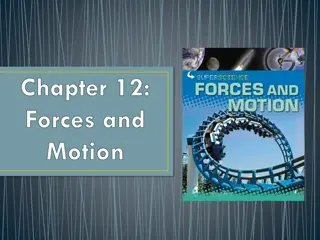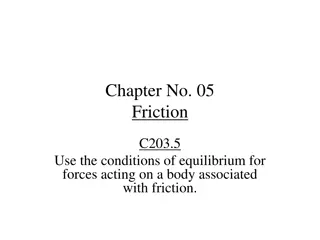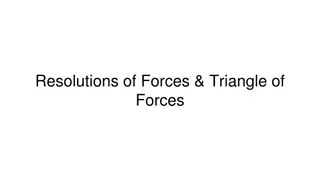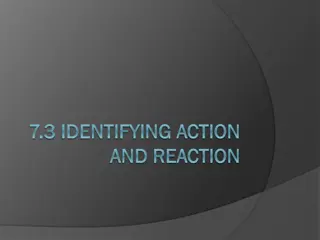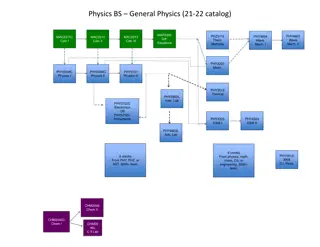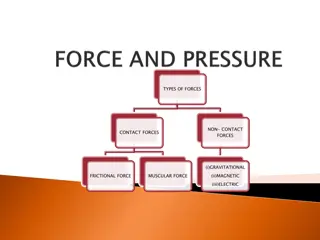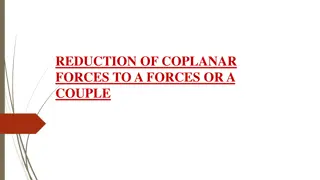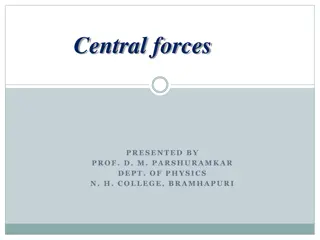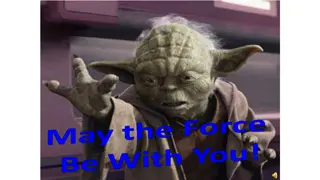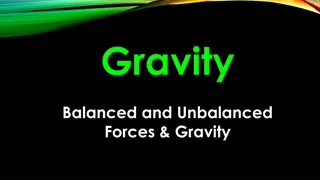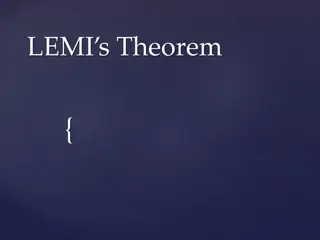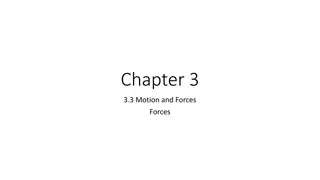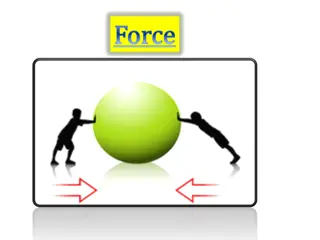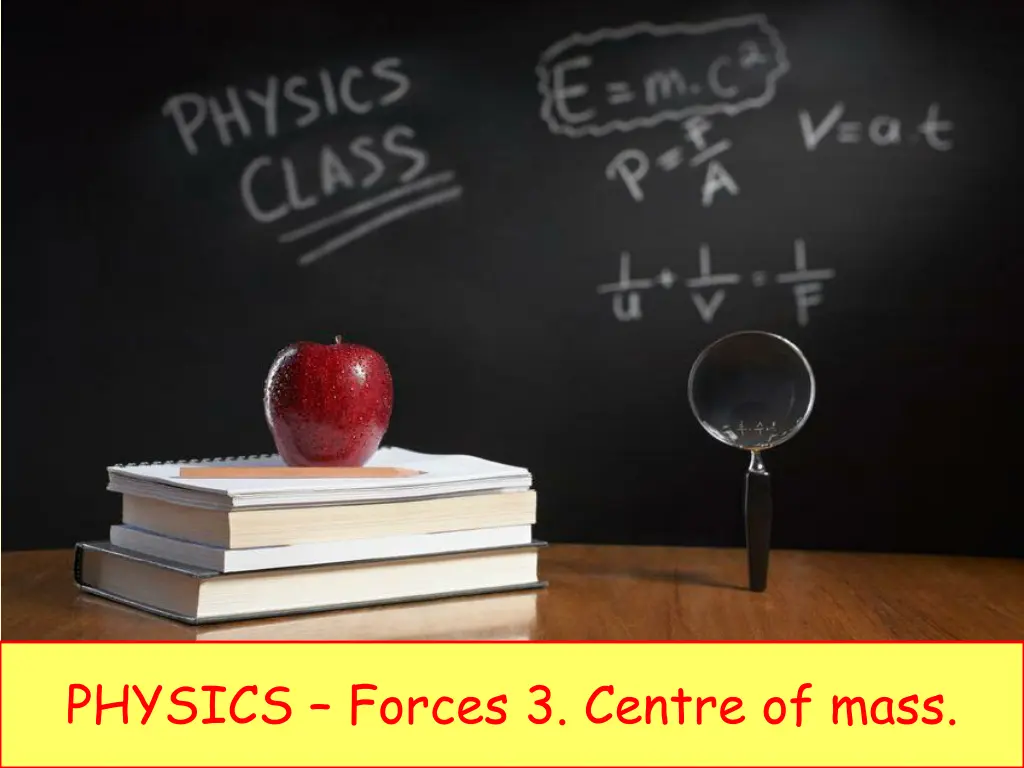
Understanding the Centre of Mass in Physics
Learn how to determine the centre of mass of objects, its impact on stability, and how to find the centre of mass for irregularly shaped objects in physics. Explore forces, vectors, and experiments to understand this fundamental concept.
Download Presentation

Please find below an Image/Link to download the presentation.
The content on the website is provided AS IS for your information and personal use only. It may not be sold, licensed, or shared on other websites without obtaining consent from the author. If you encounter any issues during the download, it is possible that the publisher has removed the file from their server.
You are allowed to download the files provided on this website for personal or commercial use, subject to the condition that they are used lawfully. All files are the property of their respective owners.
The content on the website is provided AS IS for your information and personal use only. It may not be sold, licensed, or shared on other websites without obtaining consent from the author.
E N D
Presentation Transcript
LEARNING OBJECTIVES 1.5.4 Centre of mass Core Perform and describe an experiment to determine the position of the centre of mass of a plane lamina Describe qualitatively the effect of the position of the centre of mass on the stability of simple objects 1.5.5 Scalars and vectors Supplement Understand that vectors have a magnitude and direction Demonstrate an understanding of the difference between scalars and vectors and give common examples Determine graphically the resultant of two vectors
Centre of Mass Upward force on ruler
Centre of Mass Upward force on ruler Suspension point (G) Lots of tiny particles exerting gravitational forces on either side of point G
Centre of Mass Upward force on ruler Suspension point (G) Lots of tiny particles exerting gravitational forces on either side of point G When the gravitational forces on either side of G are equal, the ruler is balanced.
Centre of Mass Upward force on ruler Suspension point (G) Lots of tiny particles exerting gravitational forces on either side of point G The forces now act together at G (a resultant force) = the weight. G is the centre of mass, or centre of gravity. When the gravitational forces on either side of G are equal, the ruler is balanced.
LEARNING OBJECTIVES 1.5.4 Centre of mass Core Perform and describe an experiment to determine the position of the centre of mass of a plane lamina Describe qualitatively the effect of the position of the centre of mass on the stability of simple objects 1.5.5 Scalars and vectors Supplement Understand that vectors have a magnitude and direction Demonstrate an understanding of the difference between scalars and vectors and give common examples Determine graphically the resultant of two vectors
So how do you find the centre of mass (centre of gravity) for an irregularly shaped object?
So how do you find the centre of mass (centre of gravity) for an irregularly shaped object?
So how do you find the centre of mass (centre of gravity) for an irregularly shaped object? Allow the card to swing freely from the pin.
So how do you find the centre of mass (centre of gravity) for an irregularly shaped object? Allow the card to swing freely from the pin. The card turns until the centre of mass is vertically under the pin.
So how do you find the centre of mass (centre of gravity) for an irregularly shaped object? Allow the card to swing freely from the pin. Repeat using a plumb line, and wherever the lines cross, this is the centre of mass. The card turns until the centre of mass is vertically under the pin.
LEARNING OBJECTIVES 1.5.4 Centre of mass Core Perform and describe an experiment to determine the position of the centre of mass of a plane lamina Describe qualitatively the effect of the position of the centre of mass on the stability of simple objects 1.5.5 Scalars and vectors Supplement Understand that vectors have a magnitude and direction Demonstrate an understanding of the difference between scalars and vectors and give common examples Determine graphically the resultant of two vectors
Centre of Mass and Stability If a force is applied, which box will be the most stable?
Centre of Mass and Stability Centre of mass Weight acting downwards Upward force from ground The box here is in equilibrium. Forces are balanced, as are the turning effects.
Centre of Mass and Stability If a small force is applied, the tilt is small and the upward and downward forces will act to return the box to its original position.
Centre of Mass and Stability With a larger force applied there is more tilt, the box goes beyond the centre of gravity, so will fall over.
Centre of Mass and Stability If the box has a wider base and a lower centre of gravity then it will be harder to tip over.
LEARNING OBJECTIVES 1.5.4 Centre of mass Core Perform and describe an experiment to determine the position of the centre of mass of a plane lamina Describe qualitatively the effect of the position of the centre of mass on the stability of simple objects 1.5.5 Scalars and vectors Supplement Understand that vectors have a magnitude and direction Demonstrate an understanding of the difference between scalars and vectors and give common examples Determine graphically the resultant of two vectors
Scalars and Vectors Forces, which have both direction and size, are known as vectors.
Scalars and Vectors Forces, which have both direction and size, are known as vectors. The resultant force can be calculated by adding the vectors together.
Scalars and Vectors Forces, which have both direction and size, are known as vectors. The resultant force can be calculated by adding the vectors together. 40N 50N 90N
Scalars and Vectors Forces, which have both direction and size, are known as vectors. The resultant force can be calculated by adding the vectors together. 40N 50N 10N
Scalars and Vectors Quantities such as mass and volume, which have size but no direction, are known as scalars. Scalars are simply added together. Eg. A mass of 40kg added to a mass of 60kg will always give a mass of 100kg.
Scalars and Vectors How do we work out the resultant when the forces are not acting along the same line?
Scalars and Vectors How do we work out the resultant when the forces are not acting along the same line? To find the resultant in this situation we apply the parallelogram rule.
Whats all this about a parallelogram rule? I might need to sit down for this bit! 30N 40N We need to draw the force lines accurately, both in terms of direction, and size. In this example, 1N = 1mm
Whats all this about a parallelogram rule? I might need to sit down for this bit! 30N 40N We need to draw the force lines accurately, both in terms of direction, and size. In this example, 1N = 1mm
Whats all this about a parallelogram rule? I might need to sit down for this bit! 30N 60N X Y 40N Draw two lines to complete the parallelogram, and then connect the diagonal from X to Y. The size and direction of the diagonal represents the resultant in both size and direction.
Whats all this about a parallelogram rule? I might need to sit down for this bit! 30N 60N X Y 40N Draw two lines to complete the parallelogram, and then connect the diagonal from X to Y. The size and direction of the diagonal represents the resultant in both size and direction.
Components at right angles Resultant lift from main rotor Vertical component supports weight Horizontal component moves helicopter forward When a helicopter tilts its main rotor, the force has vertical and horizontal components which move it forward and lift it at the same time.
LEARNING OBJECTIVES 1.5.4 Centre of mass Core Perform and describe an experiment to determine the position of the centre of mass of a plane lamina Describe qualitatively the effect of the position of the centre of mass on the stability of simple objects 1.5.5 Scalars and vectors Supplement Understand that vectors have a magnitude and direction Demonstrate an understanding of the difference between scalars and vectors and give common examples Determine graphically the resultant of two vectors

